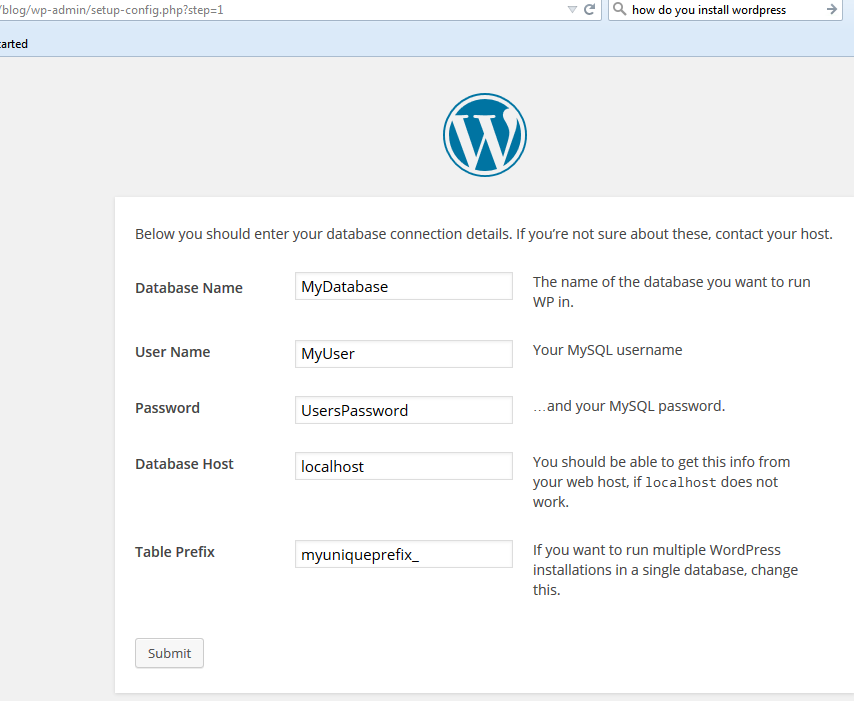Intro
Since I can host drjohnstechtalk.com myself on my AWS server, why not a second blog, totally unrelated, for a friend? This has not been documented as well as I would have liked though it is very straightforward. So I’ll mention a few things here.
WordPress prep activities
You follow the WordPress regular installation instructions: http://codex.wordpress.org/Installing_WordPress. But I’ll repeat the important steps for the DIY admin with their own server like me:
$ cd /tmp; wget ‐‐no‐check‐certificate https://wordpress.org/latest.tar.gz
$ tar ‐xzvf latest.tar.gz
$ sudo cp ‐r wordpress <YOUR_HTDOC_ROOT>/blog
Set up a dedicated virtual server (apache virtual server) to handle this additional domain (that’s a whole post to explain).
The main thing is to realize you can set up a separate database in your single mysql instance for your second blog:
$ mysql -u adminusername -p
Enter password:
Welcome to the MySQL monitor. Commands end with ; or \g.
Your MySQL connection id is 5340 to server version: 3.23.54
Type 'help;' or '\h' for help. Type '\c' to clear the buffer.
mysql> CREATE DATABASE 2nddatabasename;
Query OK, 1 row affected (0.00 sec)
mysql> GRANT ALL PRIVILEGES ON 2nddatabasename.* TO "2ndwordpressusername"@"localhost"
-> IDENTIFIED BY "passwordfor2nddatabase";
Query OK, 0 rows affected (0.00 sec)
mysql> FLUSH PRIVILEGES;
Query OK, 0 rows affected (0.01 sec)
mysql> EXIT
Bye
$ |
Then access this web site’s WordPress setup page from a browser:
URL: http://example.com/blog/wp-admin/install.php
Error connecting to the database?
I usually goof up something or other. I have even literally created a username that was ‘username’@’hostname’ because I read that off my example before I corrected it. I needed to specify localhost instead of hostname. But anyway, I didn’t panic. I tried to connect to the MySQL DB with the user I thought I had just created (and it didn’t work), i.e., mysql -u newuser -p – would not accept the password I knew I had just created.
I even had problems droppnig that user, again, because unless I specified the user as ‘username’@’hostname’ it could not find the user!
In the days of MariaDB these types of DB commands still work the same way, for the record.
